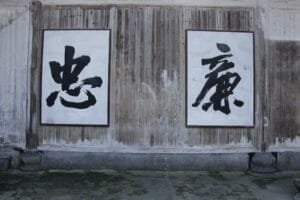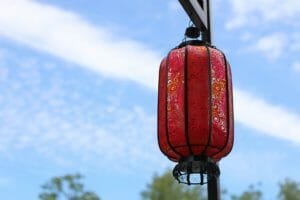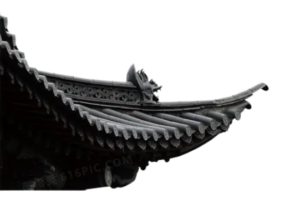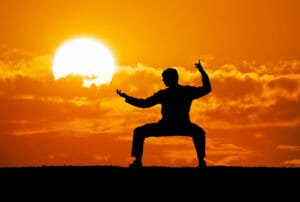Grammatical errors in sentences can take many forms.
When people who are not native Chinese speakers first start learning the Chinese language, they will make mistakes for various reasons. While some may appear to have nothing to do with Mandarin sentence structure, they frequently do.
For many people learning Chinese sentences or phrases, the order of characters is one of the most challenging aspects of Chinese grammar. This article will give some pointers on understanding the structure of Chinese sentence patterns.
Glossary variations
Because grammar rules must be understood, Chinese beginners frequently translate and switch words. However, people often need to pay more attention to the differences between Chinese and their own language’s parts of speech because they need to do so to avoid errors in sentence construction.
For example:
- English: I’m going to buy Liyou a book.
- Chinese (wrong) : 明天我要买李友一本书。Míngtiān wǒ yào mǎi Lǐyǒu yì běn shū.
- Chinese (right) :明天我要给李友买一本书。Míngtiān wǒ yào gěi Lǐyǒu mǎi yì běn shū.
Incorrect wording in Chinese sentences
For example:
- English: I don’t like to wear glasses.
- Chinese (wrong) : 我不喜欢穿眼镜。Wǒ bù xǐhuān chuān yǎnjìng.
- Chinese (right) :我不喜欢戴眼镜。Wǒ bù xǐhuān dài yǎnjìng.
- In English, both 穿 chuān and 戴 dài are translated as “wear.” It is difficult for Chinese beginners to select the appropriate Verb.
Omitting words from Chinese phrases and sentences
For example:
- English: It is a bottle.
- Chinese (wrong): 这是一瓶子。Zhè shì yì píngzǐ.
- Chinese (right):这是一个瓶子。Zhè shì yígè píngzǐ.
The Chinese quantifier is a separate part of speech, and number phrases are often crucial for people learning Chinese as a second language. As a result, sentence fragments are usually inserted incorrectly.
Incorrect word order
For example:
- English: Eating more vegetables is good for your health.
- Chinese (wrong): 吃多蔬菜是好的对你的健康。Chī duō shūcài shì hǎode duì nǐde jiànkāng.
- Chinese (right): 多吃蔬菜对你的健康有好处。Duō chī shūcài duì nǐde jiànkāng yǒu hǎochù.
Incorrect sentence structure
For example:
- English: She is smart.
- Chinese (wrong):她是聪明。Tā shì cōngmíng.
- Chinese (right):她很聪明。Tā hěn cōngmíng.
Because Chinese learners have learned “我是XX (wǒ shì XX)” before, they do not consciously apply “是shì” to all places of “is/am/are.”

The fundamental Chinese word order pattern
Chinese is classified as an SVO language. (subject + Verb + object). This is a standard word order found in many languages, including English. That is the fundamental Chinese sentence structure.
For example:
- 我是中国人。Wǒ shì zhōngguó rén. (I’m Chinese.)
- 他是经理。Tā shì jīnglǐ. (He is a manager.)
- 我们学挪威语。Wǒmen xué nuówēi yǔ. (We learn Norwegian.)
As we study more Chinese, we’ll also learn how to construct complex sentences from simple sentence patterns and use them to say more.
For example:
- Today Li You and Wang Peng bought new clothes in the mall.
- 今天(time)李友跟王朋(subject)在商场(location)买了(verb)新(modifier)衣服(object)。
- Jīntiān (time) Lǐyǒu gēn Wángpéng (subject)zài shāngchǎng (location) mǎile (verb) xīn (modifier) yīfú (object).
Using words like place and time will help us convey the statement’s meaning more clearly. Even when many sentence components are added, the core structure of a sentence remains constant. SVO: Subject + Verb + Object.

A – The regular patterns of Chinese sentences.
Chinese verbs do not change depending on who is speaking, the number of people talking, the tense, or other factors.
For example:
- 他去学校。Tā qù xuéxiào. (He goes to school.)
- 他们去学校。Tāmen qù xuéxiào. (They go to school.)
- 我们昨天去学校。Wǒmen zuótiān qù xuéxiào.(we went to school yesterday.)
- 他们明天去学校。Tāmen míngtiān qù xuéxiào.(They are going to school tomorrow.)
- The verb “qù 去” is the same whether the person is singular or plural.
B – The Chinese always order from large to small, regardless of the time or place.
For example:
- 我明年八月去挪威。Wǒ míngnián bāyuè qù nuówēi. (I will go to Norway next August.)
- 我住在广东省广州市。wǒ zhù zài guǎng dōng shěng guǎng zhōu shì. (I live in Guangdong Province, Guangzhou City.)
C – The attribute comes first, followed by the subject and Object. The adverb precedes the predicate, while the complement follows.
For example:
- 挪威是一个很美的国家。Nuówēi shì yígè hěnměi de guójiā 。(Norway is a beautiful country.)
- 他是一个很聪明的学生。Tā shì yígè hěn cōngmíng de xuéshēng. (He is a very clever student.)
D – Time words are used at the beginning of phrases or before and after the subject in Chinese.
For example:
- 我明年要去中国。Wǒ míngnián yào qù zhōngguó.(I’m going to China next year.)
- 明年我要去挪威旅游。Míngnián wǒ yào qù nuówēi lǚyóu. (I’m going to travel to Norway next year.)
E – When more than one adverb is present, the sentence is structured as follows: time + location + scope/negation + Verb
For example:
- 我学习。Wǒ xuéxí. (I do study.)
- 我昨天学习了。Wǒ zuótiān xuéxí le.(I studied yesterday.)
- 我昨天在图书馆学习了。Wǒ zuótiān zài túshūguǎn xuéxí le. (I studied in the library yesterday.)
- 我昨天在图书馆跟同学一起学习了。Wǒ zuótiān zài túshūguǎn gēn tóngxué yìqǐ xuéxí le. (I studied with my classmates in the library yesterday.)
Aside from adverbs, Chinese has an abundance of attributives. They have commonly defined as “scope + quantity + verb phrase + adjective phrase + noun phrase + head.”
As an example:
- 她是销售。Tā shì xiāoshòu. (She’s a salesperson.)
- 她是女销售。Tā shì nǚ xiāoshòu. (She is a saleswoman.)
- 她是电脑女销售。Tā shì diànnǎo nǚ xiāoshòu. (She is a computer saleswoman.)
- 她是聪明的电脑女销售。Tā shì cōngmíng de diànnǎo nǚ xiāoshòu. (She is a clever computer saleswoman.)
- 她是有丰富经验的聪明的电脑女销售。Tā shì yǒu fēngfù jīngyàn de cōngmíng de diànnǎo nǚ xiāoshòu. (She is an intelligent computer saleswoman with lots of experience.)
- 她是一个有12年工作经验的聪明的电脑女销售。Tā shì yígè yǒu 12 nián gōngzuò jīngyàn de cōngmíng de diànnǎo nǚ xiāoshòu. (She is an intelligent computer saleswoman with 12 years of experience.)
- 她是励诚公司里一个有12年工作经验的聪明的电脑女销售。tā shì lìchéng gōngsī lǐ yígè yǒu 12 nián gōngzuò jīngyàn de cōngmíng de diànnǎo nǚ xiāoshòu. (She is an intelligent computer saleswoman with 12 years of experience at Licheng company.)
F – The time quantity complement follows the Verb.
For example:
- 我们昨天上了3个小时中文课。Wǒmen zuótiān shàngle 3 gè xiǎoshí zhōngwénkè. (We had a Chinese class for three hours yesterday.)
Do you want to learn more Mandarin Chinese?
If you want to learn Mandarin Chinese, feel free to REGISTER FOR A TRIAL CLASS HERE or send us an email: info@lcchineseschool.com
We offer private lessons and group classes at all levels, HSK 1-6, children, adults, and business. All Mandarin Chinese classes are offered either in classrooms or online.














